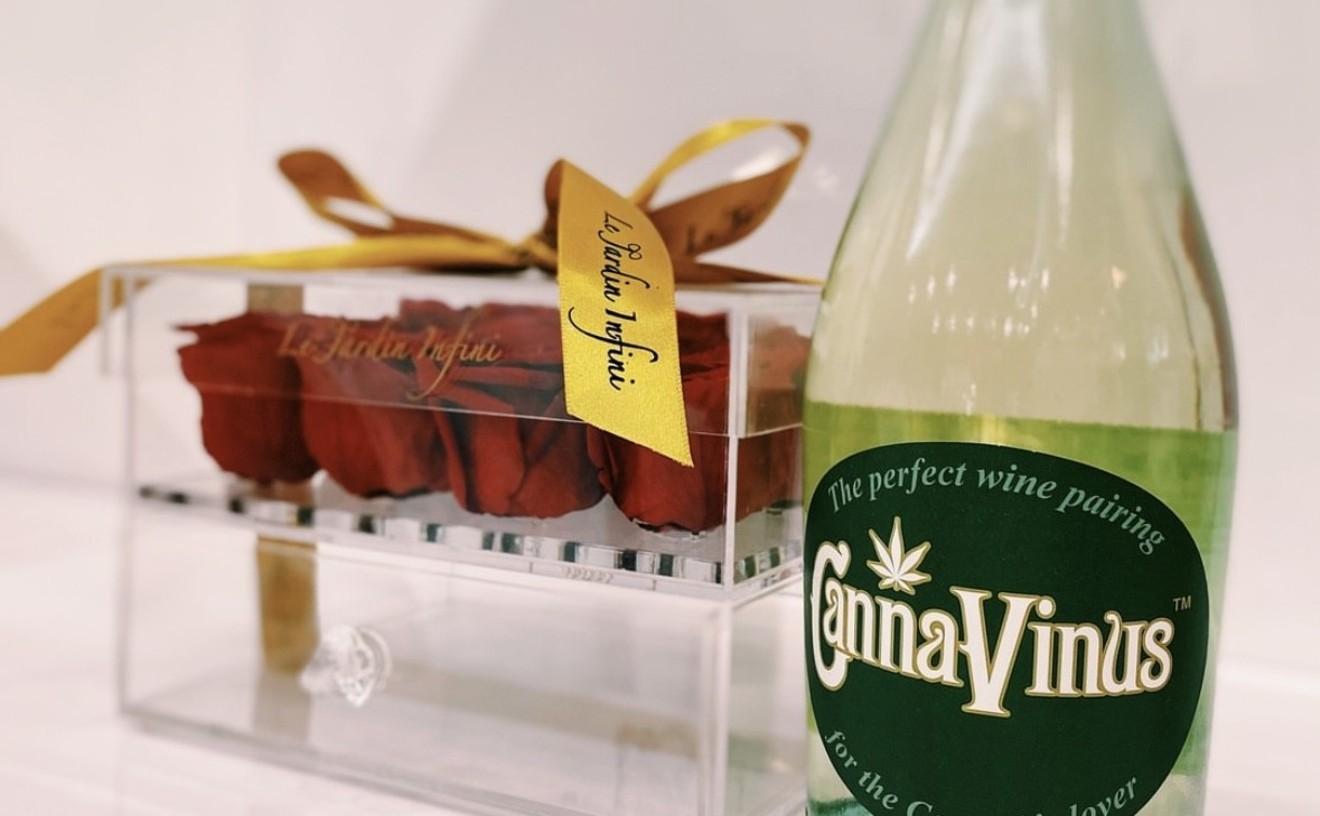Adorned with strips of deep-gray slate accents, a large Machu Picchu panorama, and recessed alcoves with brilliant gold replicas of Inca artifacts, the décor at Ceviche by the Sea is cool and contemporary while honoring its cuisine's heritage.
It's a theme that continues on throughout the entire concept.
The menu here is not your average Peruvian fare. Although some authentic home recipes appear, the focus is on the growing trend of Peruvian fusion, in which creative chefs blend tried-and-true flavors and ingredients in their own unique dishes. Spearheaded by Gaston Acurio, who has frequently been hailed as one of the best chefs in the world, the cuisine is now one of the fastest-growing on the planet.
See Also: Ten Best Sushi Restaurants in Palm Beach County
Lomo saltado, a common dish of stir-fried steak with tomatoes, onions, and French fries in a soy-based sauce with white rice, is elevated here. (The classic edition is available during lunch for $11.) Lomo Saltado del Chef ($24) combines high-quality skirt steak with crunchy pearl onions, almost-bursting cherry tomatoes, cilantro, and garlic in a light yet savory red wine, soy, and vinegar sauce. A creamy Parmesan wheat risotto comes on the side.
One of the country's most popular dishes, aji de gallina, is said to be a remnant of the French Revolution. As members of the aristocracy were imprisoned (and frequently guillotined), their chefs had to travel across the world to find work. Some went to Peru, where they fused their classic techniques with native ingredients.
Traditionally, it's a creamy and spicy stew with chicken, garlic, cheese, and aji amarillo, the ubiquitous Peruvian yellow pepper. For lunch, Ceviche by the Sea offers an upscale version of the classic. The $11 dish is composed of shredded chicken breast in the spicy yellow sauce with crispy potatoes, quail egg, and black olives with white rice on the side.
The dinner version is typical of chef Carlos Delgado's imaginative capabilities. He stuffs the chicken stew inside ravioli and finishes it with an aji amarillo alfredo with black olive, cheese, and botija olive chimichurri -- a variety hailing from Peru.
Salmon à la Chorrilliana ($21) is another one of Delgado's interpretations. Named after Chorrillos, the fishermen's district of Lima, the tomato-based sauce gets its kick from the omnipresent aji amarillo. Although it's traditionally a rustic dish, Delgado elevates his with a refined presentation and several varieties of native chilies. A perfect circle of white rice is topped with bright-pink salmon smothered in the deep burgundy sauce; crisp rounds of garlic-roasted potatoes jut out from the side like little satellite dishes, lending an architectural effect to the dish.
Even with all the interesting options and interpretations, it's sacrilege to leave without trying at least one variation of the namesake dish. The place offers five varieties, each of which is available mild, medium, or hot.
The clásico ($15) combines corvina with traditional lime juice, cilantro, red onions, sweet potato, choclo (a large chewy kernel of corn from the Andes), and cancha, which resemble giant, half-popped popcorn kernels. It gets its heat from limo peppers, which Delgado buys frozen and pickles himself.
After attending culinary school at Le Cordon Bleu in Miami, Delgado and his wife, Ileana (also a trained chef), went back to Peru to work in a kitchen and study at Los Andes culinary school. While there, he won a prestigious Mistura Award (one of the largest food festivals in South America) for a selection of quinoa dishes.
Some of those very dishes made it to the menu at Ceviche. His quinoa tabbouleh ($11) combines the Andean grain with mint, parsley, tomato, cucumber, lemon citronette, fluffy tomato cake, and green. The quinoa crème brûlée ($6) typifies the concept of fusion coming out of the country at the moment.
It's that mix of global flavors and techniques with indigenous ingredients that has been garnering the accolades for the country's new cuisine.
And that's exactly what partner Antonio Pardo wanted to showcase. Following a trip to visit his family in Peru, Pardo was fondly thinking of the food and restaurants he encountered in his native Lima and Cuzco. With the majority of Broward Peruvian restaurants offering homestyle fare in casual environments, he wished for alternatives in the area.
"I went to Peru after living here 22 years," says Pardo. "I felt that I wanted to connect with Peru by bringing that cuisine to Broward. I've experienced the high-end Peruvian restaurants in Miami; it really bothered me that I had to go all the way to Miami to find something similar to what we'd find in Peru."
At Ceviche by the Sea, you'll find upscale Peruvian without the trek.
Ceviche by the Sea is located at 2823 E. Oakland Park Blvd. in Fort Lauderdale. Call 954-565-1085, or visit cevichebythesea.com.
Follow Sara Ventiera on Twitter, @saraventiera.
Follow @CleanPlateBPB










